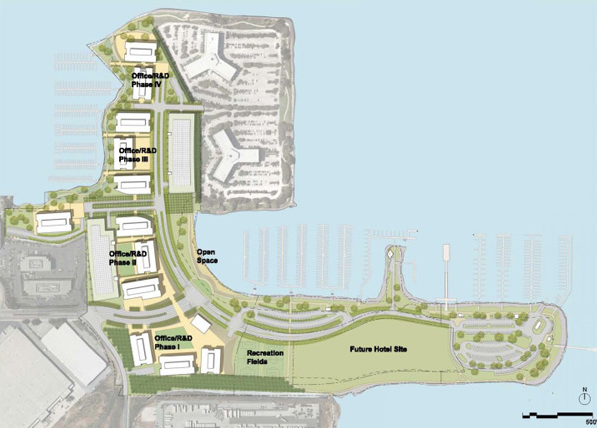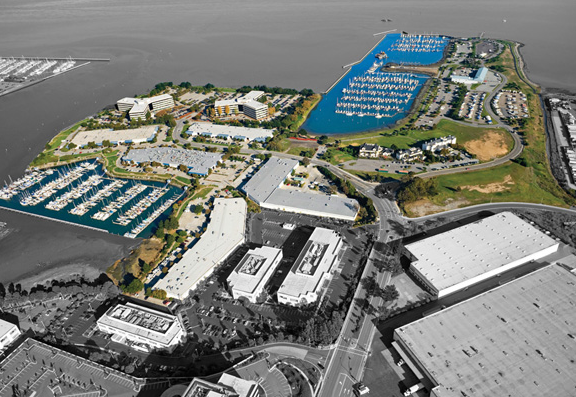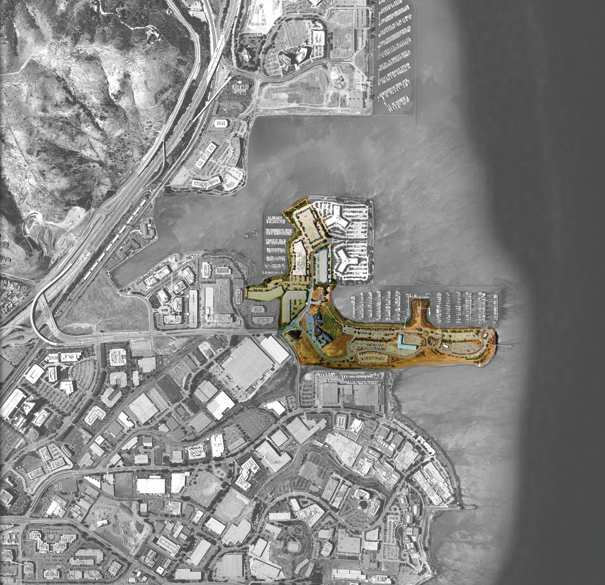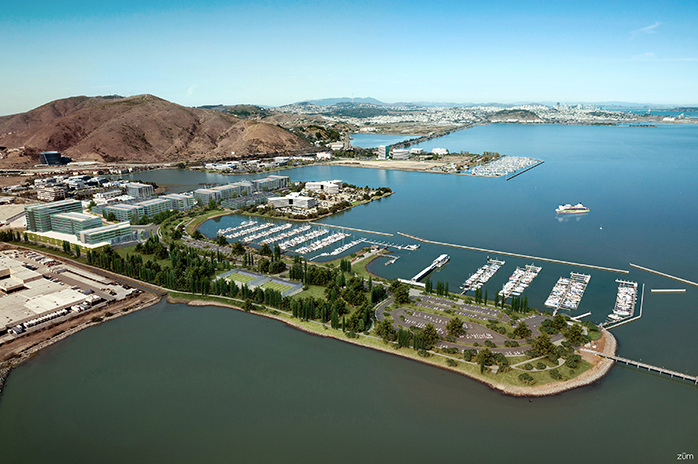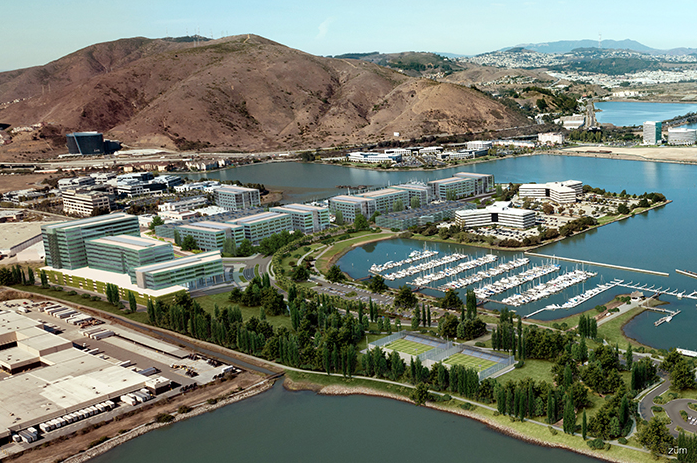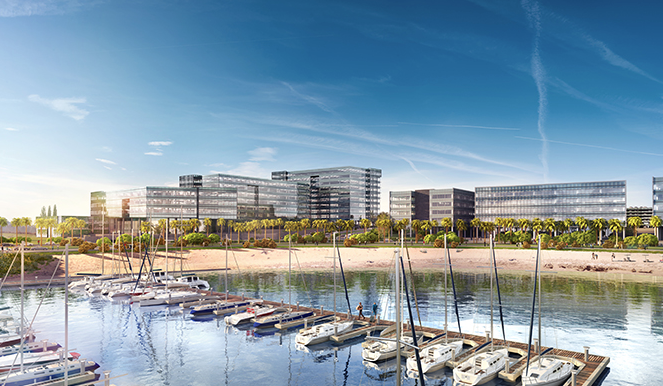James Lee Han delivered a followup letter to LAFCo Executive Director Martha Poyatos regarding the July 15, 2015 LAFCo meeting.
Good afternoon Ms. Poyatos,
I just wanted to thank you and staff for including my comment letter re. the Municipal Service Review (MSR) of the San Mateo County Harbor District in the board packet for the July 15 LAFCo meeting. I also wanted to submit this letter as a longer response to some of the points brought up during the discussion of the Harbor District that day:
“Absence of Nexus”
As I stated at last week’s meeting, one of the key reasons I am interested in the Harbor District is because of my family’s history as regular visitors to Pillar Point Harbor from our home in Redwood City. Despite having been born and raised on “the other side of the hill,” all throughout my childhood our family would take day trips to the San Mateo County coast, and specifically to Pillar Point, at least once a month when I was a child. There were some summers during which we were at Pillar Point almost every weekend. We even erroneously referred to trips to Pillar Point as “going to Half Moon Bay” because to us they were one and the same: all part of a lovely trip to the coast.
It’s for this reason I feel the need to challenge the idea put forth at least week’s meeting and in the staff report that there’s an “absence of nexus” between the property tax revenue base for the Harbor District and the two sites over which the district has jurisdiction. I strongly disagree with the idea that only coastside residents near Pillar Point should be contributing property tax, and I strongly oppose the suggestion made by one of the LAFCo commissioners at last week’s meeting that the Harbor District’s boundaries could be redrawn.
There are many public resources in our county that, like the Harbor District, are ultimately paid for by taxpayers countywide, such as Edgewood Park and San Bruno Mountain. Yet if I mention either of these parks to the average county resident, they are far less likely to have heard about them, much less have actually visited them, in comparison to Pillar Point Harbor. If the “absence of nexus” argument is to be applied equally to public resources within county borders, county residents would have far less of a reason to pay to support parks such Edgewood and San Bruno Mountain than they do Pillar Point Harbor.
Pillar Point is a well known recreation location for working families in San Mateo County and is a nationally recognized destination for commercial fishing and recreational boating. There is no good reason my family, who were regular visitors to Pillar Point and used most of its amenities, should have paid no property tax to enjoy this public resource just because we lived in Redwood City, while a lower income family who may not have had the time or relative luxury to spend so many weekends recreating as our family did should have been made to pay that tax in our stead just because they happened to live ten miles closer to the harbor.
On any weekend or holiday with decent weather, it’s easy to see that most of the people who use and enjoy Pillar Point are not coastside residents. Limiting the tax revenue base of the Harbor District to the small proportion of county voters who live near Pillar Point and Oyster Point would only increase, not decrease, the unfair tax burden alluded to by staff in the “absence of nexus” discussion.
The True “Absences of Nexus”
Those who are truly hit with an unfair tax burden by the Harbor District are minority communities. As widely reported in recent years, the participation of people of color in public parks and outdoor recreation activities is disproportionately low, far lower than their white counterparts.[1][2][3] As a regular user of the county parks system, I can safely say that the disparity in the racial makeup between who actually visits our county parks and the people who actually live in adjacent neighborhoods is striking, particularly at parks like San Bruno Mountain.
If LAFCo is concerned about an absence of nexus where county residents are taxed for a resource that they don’t utilize, I would ask that the commission look into Harbor District policies around inclusive hiring to ensure that harbor and marina staff better represent the ethnic makeup of San Mateo County. I would also ask LAFCo to make recommendations to the Harbor District on ways to increase minority outreach and participation in recreational activities at both Pillar Point and Oyster Point. It is my impression that the MSR did not address these issues.
Also, I would urge LAFCo commissioners who are able to make recommendations to the county’s Parks Department, such as Supervisors Tissier and Horsley, to make similar recommendations to park staff regarding inclusive hiring and minority outreach.
Finally, the “absence of nexus” discussion highlights why I believe the Joint Powers Agreement (JPA) governing Oyster Point Marina should be dissolved and management of the marina given back to South San Francisco. Compared to Pillar Point Harbor, Oyster Point Marina is not a widelyknown destination for recreational activities to the general public, and it is certainly a public resource far less utilized by countywide residents than Pillar Point. Even the ferry service which transports employees from the East Bay mostly serves to bring workers to companies headquartered in South San Francisco. Furthermore, page 33 of the MSR highlights why the Marina is not a fiscally prudent management opportunity for either the Harbor District or the County of San Mateo. If LAFCo remains concerned about absences of nexus I would respectfully ask that staff seriously consider a “decoupling” of the Harbor District from its JPA with South San Francisco and make that recommendation to the district.
Current and Past Makeup of the Board of Commissioners
It was repeatedly asserted in last week’s meeting that none of the findings in the MSR were in any way influenced by the current or past makeup of the board. However, the reason why staff’s analysis is generally understood by concerned members of the public who read it as being at least partially influenced by the board’s makeup is that a number of the problems raised in the MSR can be traced directly back to specific board members, mainly Commissioners Will Holsinger and Jim Tucker, both of whom were voted out nine months ago:
This includes the concern over a “lack of board consensus” expressed in the MSR regarding the district’s board, as exemplified by the way both of the former commissioners wasted staff time and public resources by trying to stonewall or take issue with even the most basic requests and actions taken by their newest board colleague Sabrina Brennan, such as posting her contact information on the Harbor District’s website and instituting public, “_______@smharbor.com” email accounts for Harbor Commissioners.
It is my impression that the public is also concerned that a number of the issues raised by the MSR were issues that should have been raised long before the three newest commissioners joined the board. For example, concerns raised in the MSR over an undue board influence on staff should surely have been raised years earlier about Commissioner Tucker, who was regularly seen taking meals with the former General Manager Peter Grenell and other members of district staff at restaurants in South San Francisco during their time with the Harbor District. Likewise, concerns about inappropriate interactions between commissioners and staff should have been raised when Commissioner Holsinger openly criticized staff attorneys for “shoddy legal work” at a public meeting a couple years ago. The fact that such concerns have been raised only when three new board members have been elected in the last three years and two of the biggest sources of concern have been voted out by county residents raises the specter of partiality, even if this was surely not the intent of staff. Based on comments made at last week’s meeting it’s my impression that staff is aware of the optics of the situation and I am hopeful that these concerns will be minimized in the future.
I want to note as well that during last week’s LAFCo meeting the staff consultant present made particular note of the fact that Harbor District meetings were videotaped and made available online, and he spoke positively about how easy it was to find the source material he needed. The reason district meetings are recorded and made available to the public is because Commissioner Brennan advocated for that well before she was elected to the board in 2012. In contrast, it was the two commissioners ousted nine months ago who voted to stop funding the videotaping of meetings two years ago, along with the two current commissioners who have served on the board the longest. It precisely the changing nature of the board, starting from the 2012 election, that leads me to believe the district is worth maintaining as an agency separate from the county.
Public Participation
As you will have gathered by the number of written comments received on the subject, county residents representing a wide spectrum of interests, personal or otherwise, are very concerned about the future of a Harbor District they ultimately fund. I appreciate that the commission let a couple members of the public speak for longer than two minutes, but I respectfully ask that in future the public be allowed three minutes to speak. While I am mindful of the fact that your meetings can run long, many elected and appointed bodies allow the public three minutes of speaking time, especially when there are only about ten people present to speak on an item.
Also, it is my understanding that LAFCo meetings are not recorded and made available to the public. I would respectfully ask that LAFCo start doing so, at least online if not on TV. As the commission already meets in the Board of Supervisors’ chambers, it seems like a clear missed opportunity to not use the existing infrastructure within the chambers to record these public meetings. As your staff consultant mentioned at last week’s meeting, the availability of Harbor District meeting videos helped him significantly with the work he was doing for your MSR. It seems that recording of LAFCo meetings would likewise only benefit the public in a similar way.
Thank you for your time and consideration.
James Lee Han
